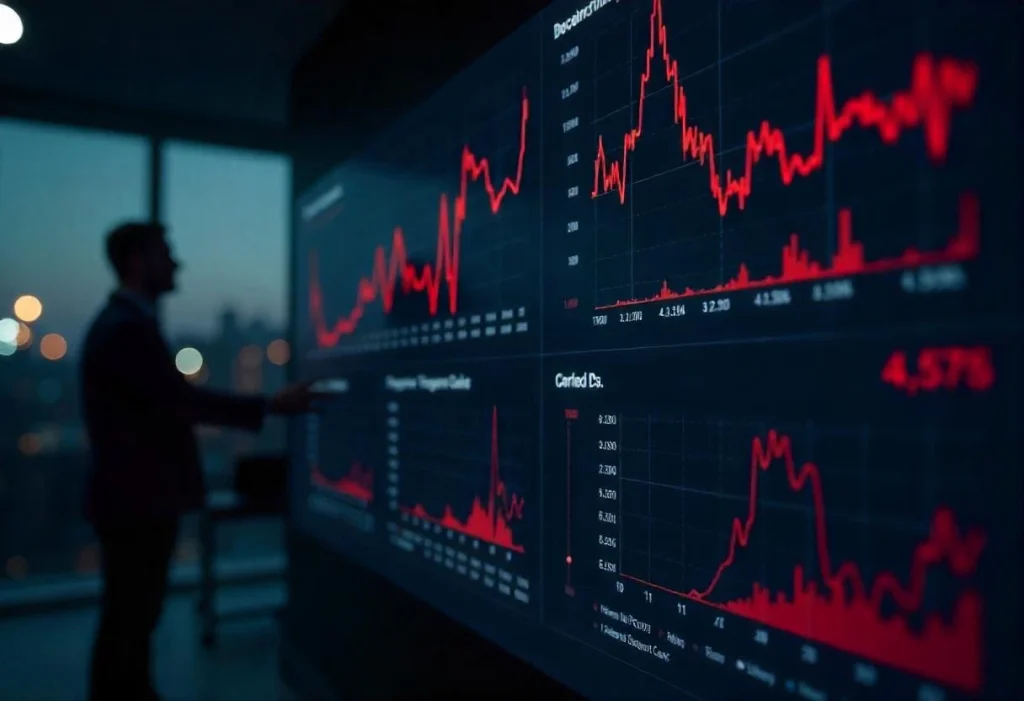
NEWSLETTER
Wpisz swój adres e-mail i zyskaj e-booka
Bez niechcianej poczty ani reklam
Tylko merytoryczne treści z obszaru digitalizacji produkcji

KPIs appear in almost every business today. They are used by micro-enterprises, family businesses, as well as large manufacturing plants. We’ve all heard of them, many of us follow them.
However, not everyone wonders if they’re sure they’re a good fit and if they really help with decision-making.
Sometimes KPIs are treated as a mandatory column in the monthly report, and sometimes as an alibi for failed activities.
In this article, I will try to show that you can approach the subject quite differently. I’ll talk about monitoring performance indicators, what’s working, what’s worth improving, and how technologies can help with this.

KPIs (or Key Performance Indicators) are otherwise known as numbers that describe the effectiveness of an area.
However, it does not have to be just dry data. We can use it first and foremost as a tool. It can help us understand where we are and whether we are moving in the right direction as a company.
Each KPI should be assigned to a specific goal – preferably one that can be achieved, measured and interpreted.
These indicators can be expressed in percentages, quantities, times or any other unit.
It is important that they give us the answer to the question: are you sure everything is working as it should?
Moreover, not all indicators are effective KPIs.
I often encounter a situation where companies monitor huge amounts of data. Unfortunately, sometimes only a few items are realistically useful. The rest are statistics that may look nice on a graph, but don’t tell anything.
That’s why KPIs are worth regularly reviewing, refreshing and adjusting to the company’s current situation.

Without indicators, we are operating in the dark. It’s like driving a car without a speedometer. Yes, it is possible – but it is difficult to predict what will happen next.
In a company, KPIs give us feedback – not only to the manager, but also to the team. They allow us to monitor progress, control costs, assess quality and make changes where needed. It’s a kind of road map that helps us not to get lost.
But that’s not all. KPIs are also a great tool for internal communication. When every person in the company knows and understands them, it’s easier to have consistency of effort and better cooperation between departments.
KPIs can quickly catch anomalies and pinpoint areas that need attention, often before the problem grows.

The best KPIs – key performance indicators can be very simple.
Take the sales department, for example – if the goal is to acquire 20 customers per month, and we currently have 15, our rate is 75%.
Or a website – we measure how many people visited the page with a contact form, and how many filled it out. If we have 100 requests per 1,000 visits – the conversion is 10%, which means we have achieved the full KPI result, if that was our goal.
In practice, there are hundreds of such examples.
The key is to measure those things that really affect the company’s performance and those that can be improved.

Get 5 chapters of the book for free!
Join the newsletter and gain access to 40% of the book
“15 Steps to Buying an Information System“.
One of the best examples of a practical KPI used in manufacturing is OEE (Overall Equipment Effectiveness). It shows how efficiently we use production machinery. It consists of three parts:
Multiplying these three elements gives a value from 0 to 100%, which shows overall efficiency. Thanks to OEE, we know exactly where the problem is – if a machine is taking too long to stand, if it is not producing enough, or if there are quality problems. In many cases, just introducing OEE as a KPI can change the way you look at production. You can also build additional KPIs around it – such as changeover time, number of breakdowns, level of shortages, etc.

The biggest challenge when working with KPIs is the quality of the data. Still many companies use paper reports or Excels that are filled out manually.
The problem is that information from such a source may be incomplete, delayed or simply wrong.
Then the analysis of KPIs ceases to make sense, because they do not reflect reality.
Therefore, systems that collect data automatically are increasingly being implemented. They can do this directly from machines, sensors, ERP systems or applications.
This makes monitoring of performance indicators happen in real time and shows exactly what is happening here and now.
And this paves the way for better planning and faster response to problems.

The best KPIs should be tailored to the recipient. A different KPI will be useful to an operator on the line, another to a shift manager, and another to a company executive.
Therefore, it is important that each indicator has a clear purpose and is set in the context of the person’s or team’s performance.
It is not necessary to implement dozens of indicators right away. Sometimes it’s better to start with a few of the most important, but well thought out ones.
Only later can they be expanded and adjusted to the changing situation in the company. It is important that they are regularly reviewed and updated.
Because every business changes, and key KPIs should change along with it.

In my daily work, I often use dashboards. These are screens that show current KPIs. They allow you to see what is happening here and now. If any KPI is falling, you can react right away. Dashboards work especially well in operations departments, where quick reactions are important.
Reports, on the other hand, are a more analytical tool. They show data over a longer period – a week, a month, a quarter. They allow us to assess trends, compare results with previous periods and plan changes. Ideally, the dashboard and report complement each other.
KPIs help you understand what’s really going on in your company. But for them to work, they must be simple, well-chosen and based on proven data. The idea is not to measure everything – just what actually affects the company’s performance. And not for the sake of measuring – just to do something about it.
If this text helped you look at the topic of KPIs from a slightly different angle, you’ll find more on the topic in the latest episode of Digitalize.co.uk!
You’ll find more answers to questions related to building dashboards, reporting and monitoring performance indicators.